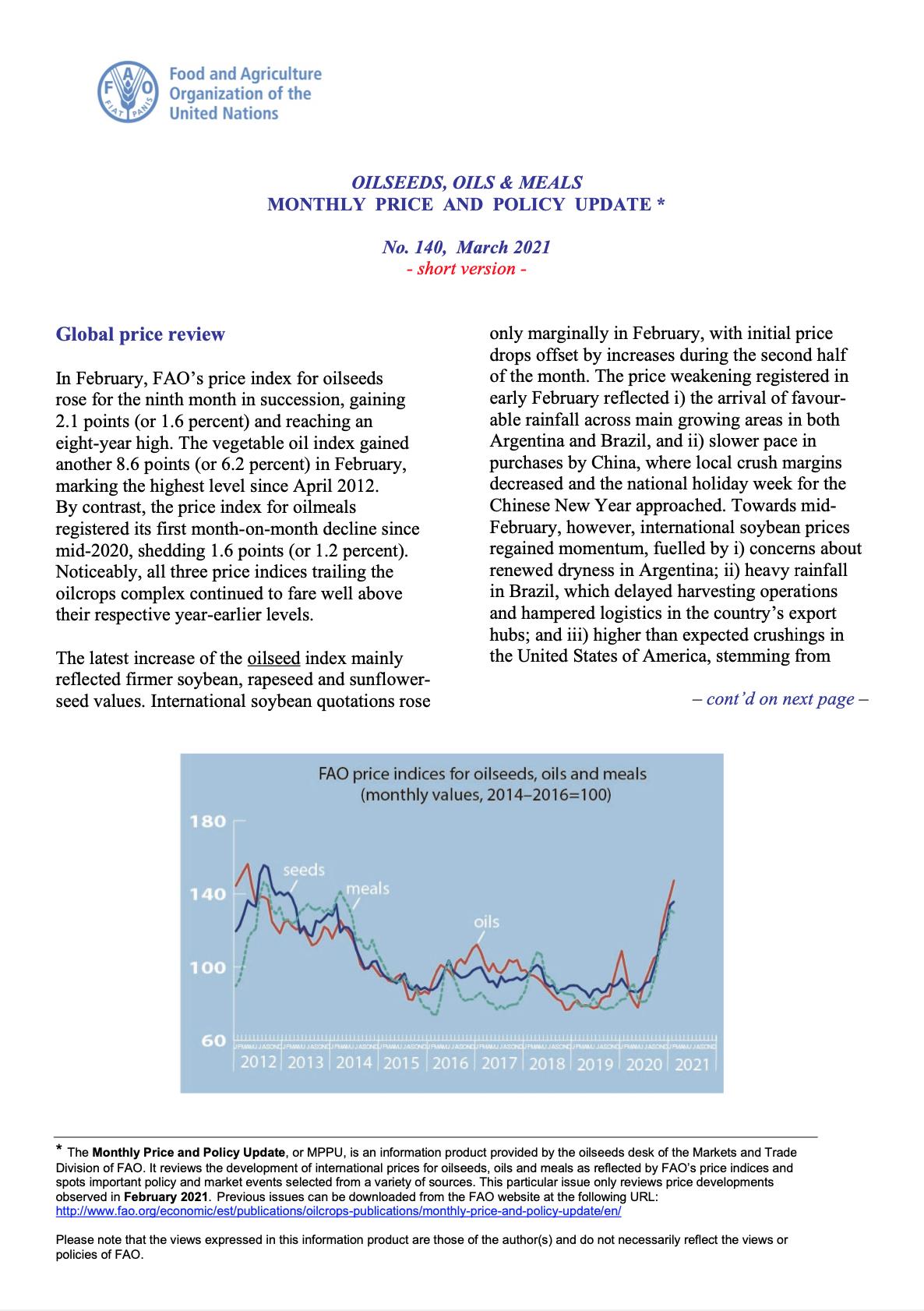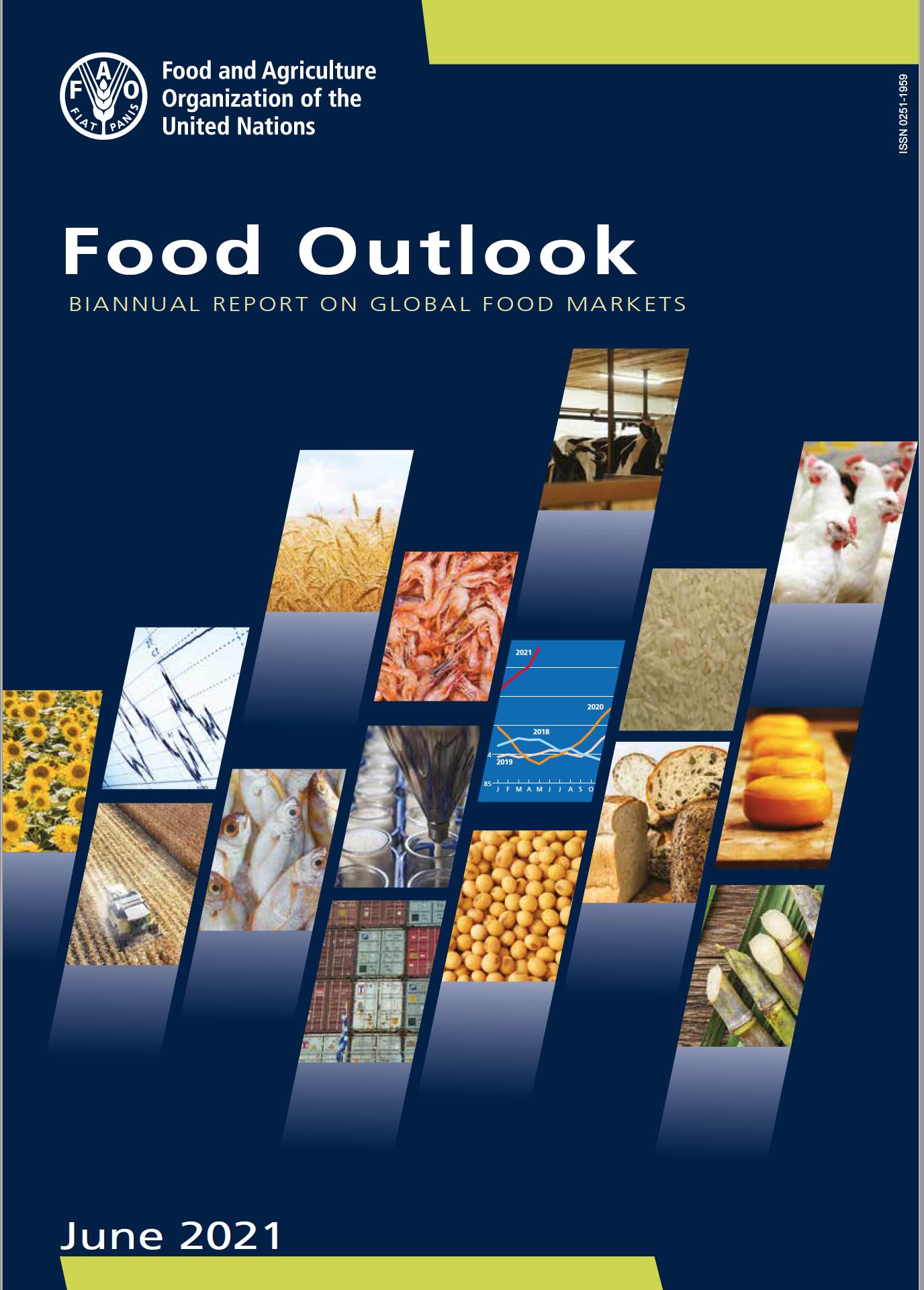
Food Outlook – Biannual Report on Global - June 2021
10/06/2021
Food Outlook is published by the Trade and Markets Division of FAO under Global Information and Early Warning System (GIEWS). It is a biannual publication focusing on developments affecting global food and feed markets. Each report provides comprehensive assessments and short term forecasts for production, utilization, trade, stocks and prices on a commodity by commodity basis and includes feature articles on topical issues. Food Outlook maintains a close synergy with another major GIEWS publication, Crop Prospects and Food Situation, especially with regard to the coverage of cereals. Food Outlook is available in English. The summary section is also available in Arabic, Chinese, French, Spanish and Russian.
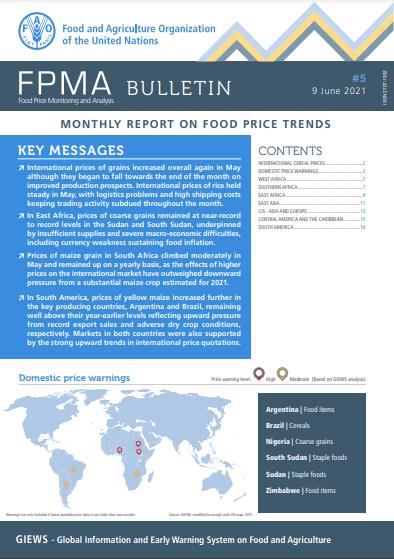
Food Price Monitoring and Analysis (FPMA) Bulletin #5, 9 June 2021
09/06/2021
International prices of grains increased overall again in May although they began to fall towards the end of the month on improved production prospects. International prices of rice held steady in May, with logistics problems and high shipping costs keeping trading activity subdued throughout the month. In East Africa, prices of coarse grains remained at near-record to record levels in the Sudan and South Sudan, underpinned by insufficient supplies and severe macro-economic difficulties, including currency weakness sustaining food inflation. Prices of maize grain in South Africa climbed moderately in May and remained up on a yearly basis, as the effects of higher prices on the international market have outweighed downward pressure from a substantial maize crop estimated for 2021. In South America, prices of yellow maize increased further in the key producing countries, Argentina and Brazil, remaining well above their year-earlier levels reflecting upward pressure from record export sales and adverse dry crop conditions, respectively. Markets in both countries were also supported by the strong upward trends in international price quotations.
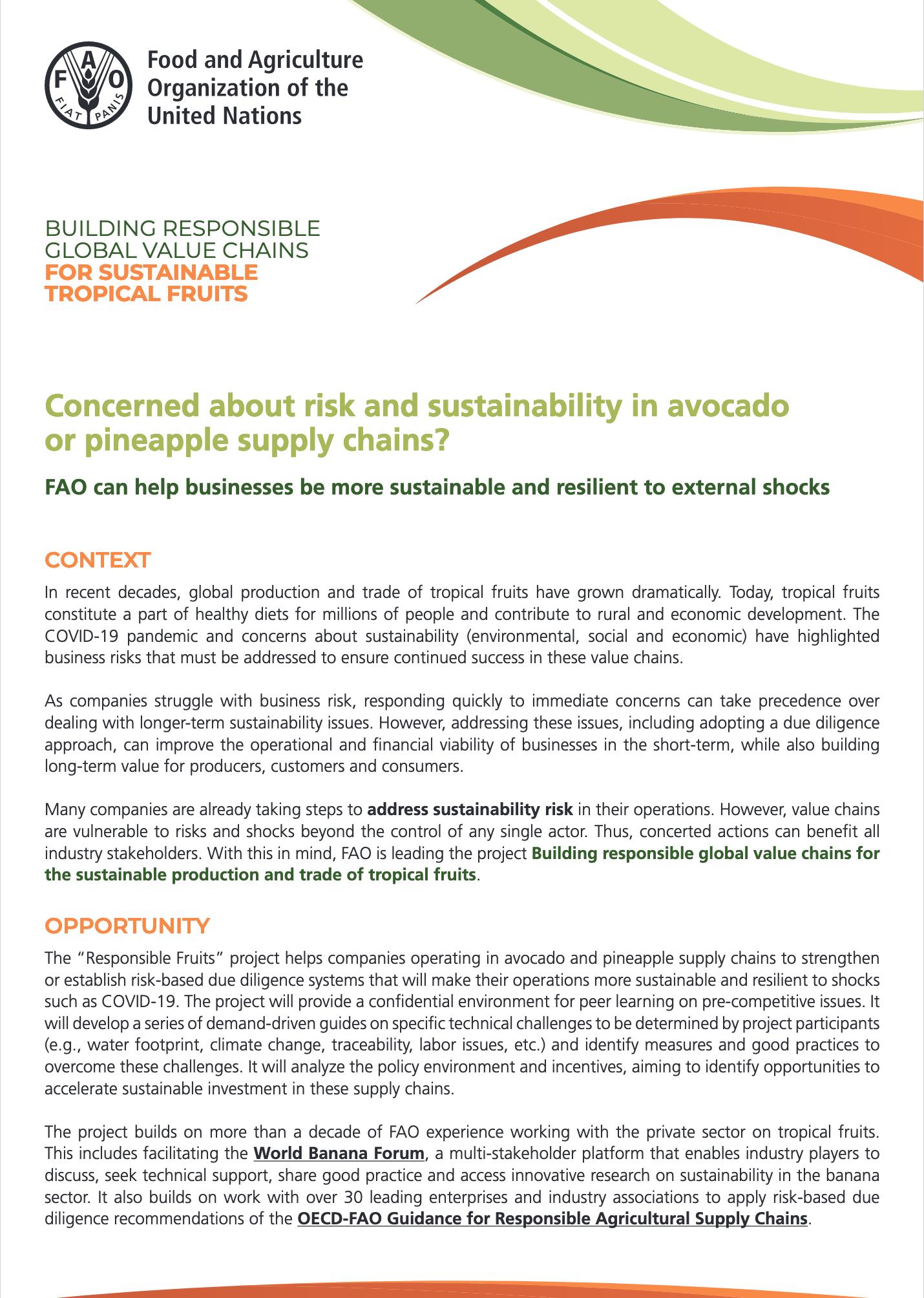
Concerned about risk and sustainability in avocado or pineapple supply chains?
05/06/2021
n recent decades, global production and trade of tropical fruits have grown dramatically. Today they are a part of a healthy diet for millions of people and contribute to rural and economic development. The COVID-19 pandemic and concerns about sustainability (including environmental, social and economic aspects) have highlighted business risks that must be addressed to ensure continued success in these value chains. Many companies are taking steps to address sustainability risk in their operations. However, value chains are vulnerable to risks and shocks beyond the control of any single actor. Thus, concerted actions can benefit all industry stakeholders. With this in mind, FAO is leading the project “Building responsible global value chains for the sustainable production and trade of tropical fruits” (GCP/GLO/022/GER). This project helps companies operating in avocado and pineapple supply chains to strengthen or establish risk-based due diligence systems that will make their operations more sustainable and resilient to shocks such as COVID-19. The project will provide a confidential environment for peer learning on pre-competitive issues. It will develop a series of demand-driven guides on specific technical challenges to be determined by project participants (e.g., water footprint, climate change, traceability, gender, labor issues, etc.) and identify measures and good practices to overcome these challenges. It will analyze the policy environment and incentives, aiming to identify opportunities to accelerate sustainable investment in these supply chains. This flyer provides an overview for stakeholders including international organizations, researchers, academics and policy makers.
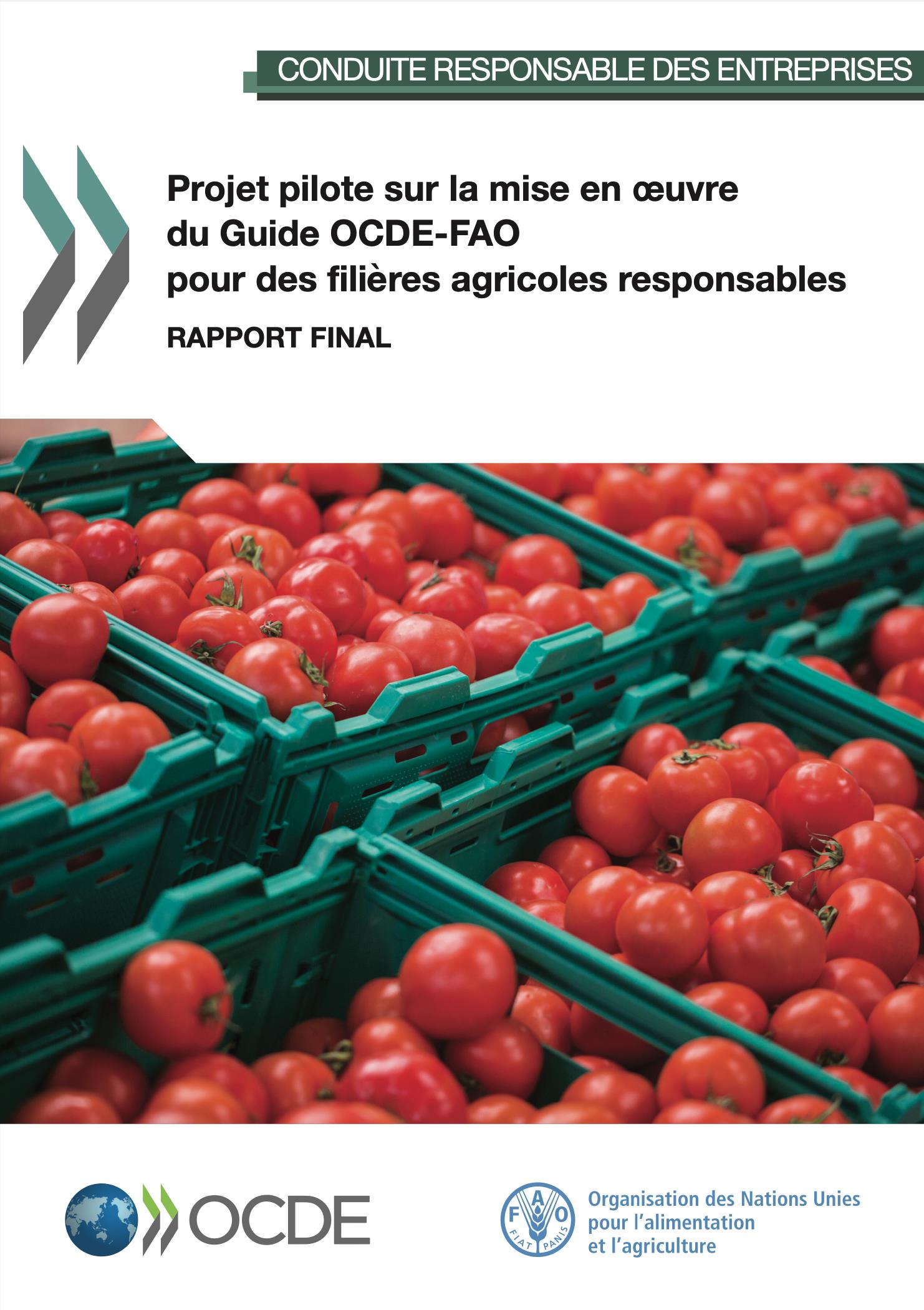
Projet pilote sur la mise en oeuvre du Guide OCDE-FAO pour des filières agricoles responsables
04/06/2021
Pour soutenir l’application pratique du Guide OCDE-FAO, au début de 2018, l’OCDE et la FAO ont lancé un projet pilote de mise en œuvre avec plus de trente entreprises et initiatives industrielles. Ce rapport final présente les principales conclusions du projet pilote. Il résume les leçons apprises, les bonnes pratiques et les défis dans la mise en œuvre de la diligence raisonnable de la chaîne d’approvisionnement identifiés par les participants au projet pilote, et présente des recommandations et les prochaines étapes pour les entreprises et les décideurs politiques afin de promouvoir l’adoption des recommandations du Guide OCDE-FAO dans le secteur agricole.
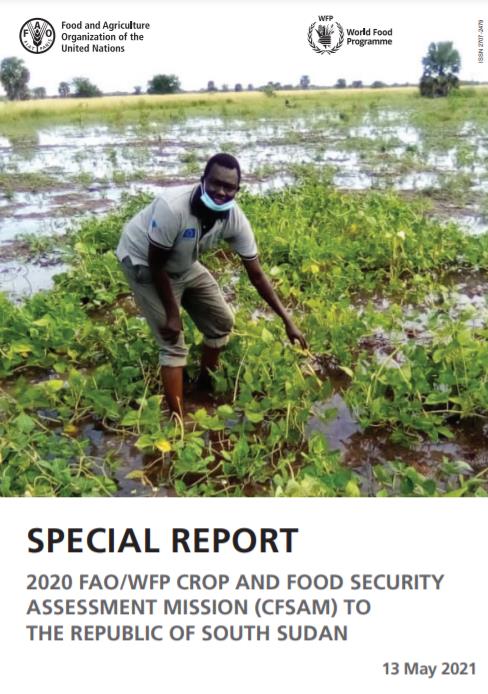
Special Report – 2020 FAO/WFP Crop and Food Security Assessment Mission (CFSAM) to the Republic of South Sudan
13/05/2021
An FAO/WFP Crop and Food Security Assessment Mission (CFSAM) conducted an analysis from 7 to 16 December 2020 to estimate the cereal production in South Sudan during 2020, based on a review of data and information collected by the Ministry of Agriculture and Food Security (MAFS). The Mission also reviewed secondary data from a variety of sources in order to produce an overview of the overall food security situation in the country. Due to COVID-19‑related travel restrictions, the analysis was performed remotely through several video‑conferences with relevant staff of the FAO Office in South Sudan. The CFSAM reviewed the findings of several Crop Assessment Missions conducted at harvest time from August, following the removal of COVID‑19‑related travel restrictions, to December 2020, in different agro‑ecological zones of the country.
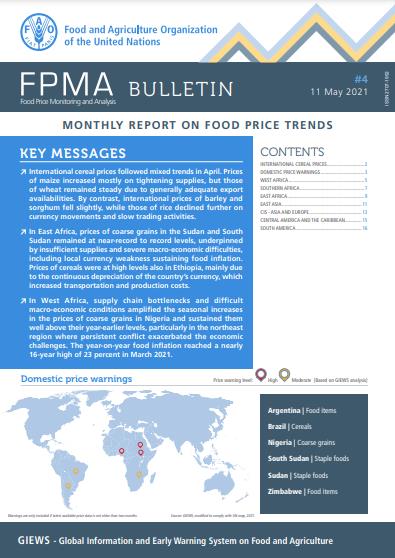
Food Price Monitoring and Analysis (FPMA) Bulletin #4, 11 May 2021
11/05/2021
International cereal prices followed mixed trends in April. Prices of maize increased mostly on tightening supplies, but those of wheat remained steady due to generally adequate export availabilities. By contrast, international prices of barley and sorghum fell slightly, while those of rice declined further on currency movements and slow trading activities. In East Africa, prices of coarse grains in the Sudan and South Sudan remained at near-record to record levels, underpinned by insufficient supplies and severe macro-economic difficulties, including local currency weakness sustaining food inflation. Prices of cereals were at high levels also in Ethiopia, mainly due to the continuous depreciation of the country’s currency, which increased transportation and production costs. In West Africa, supply chain bottlenecks and difficult macro‑economic conditions amplified the seasonal increases in the prices of coarse grains in Nigeria and sustained them well above their year-earlier levels, particularly in the northeast region where persistent conflict exacerbated the economic challenges. The year-on-year food inflation reached a nearly 16-year high of 23 percent in March 2021.
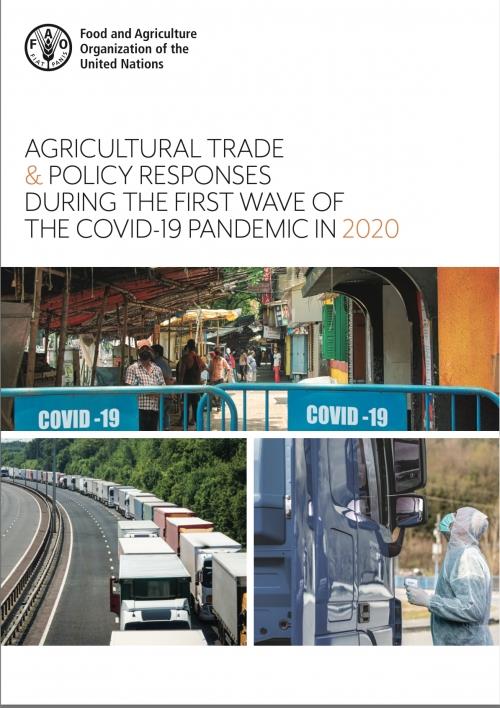
Agricultural trade & policy responses during the first wave of the COVID-19 pandemic in 2020
10/05/2021
Measures adopted around the world to contain the COVID-19 outbreak helped curb the spread of the virus and lowered the pressure on health systems. However, they also affected the global trading system, and the supply and demand of agricultural and food products. In response to concerns over food security and food safety worldwide, many countries reacted immediately to apply policy measures aiming to limit potentially adverse impacts on domestic markets. Covering the first half of 2020, the report provides an overview of short-term changes in trade patterns and policy measures related to agricultural trade that countries adopted in response to the pandemic. Despite the shocks caused by the COVID-19 pandemic and containment measures, the efforts of governments and agricultural sector stakeholders to keep agricultural markets open and trade flowing smoothly contributed to remarkably resilient value chains. Effects on global trade in food and agriculture remained limited to short-term disruptions at the very beginning of the pandemic. Governments’ policy responses covered a wide range of measures, including export restrictions, lowering of import barriers, and domestic measures. Most of the trade restricting measures were short-lived–. International political commitments were pivotal in the coordination of a global response to the crisis and in deterring countries from taking unilateral measures that could have harmed food security in other parts of the world. However, COVID-19 is still spreading and may entail severe implications for access to food and longer-term shifts in global demand and supply of food and agricultural commodities.
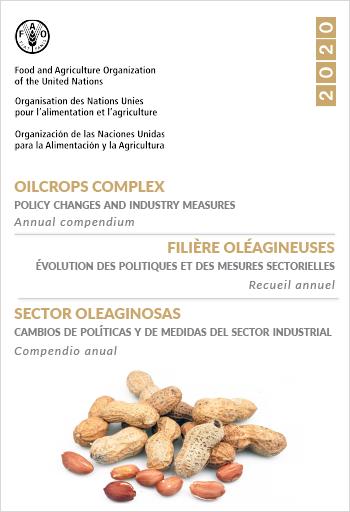
Oilcrops complex: policy changes and industry measures - Annual compendium - 2020
10/05/2021
The 2020 compendium offers an overview of salient government policies and related private sector measures concerning global and national markets for oilcrops and derived products. Its purpose is to facilitate the work of policy makers, market experts, analysts and other interested stakeholders by providing a short, concise overview of policy developments relevant to the sector. Detailed news items are presented in tabular form (in English only), preceeded by a brief discussion of the key policy trends observed in the year under review.
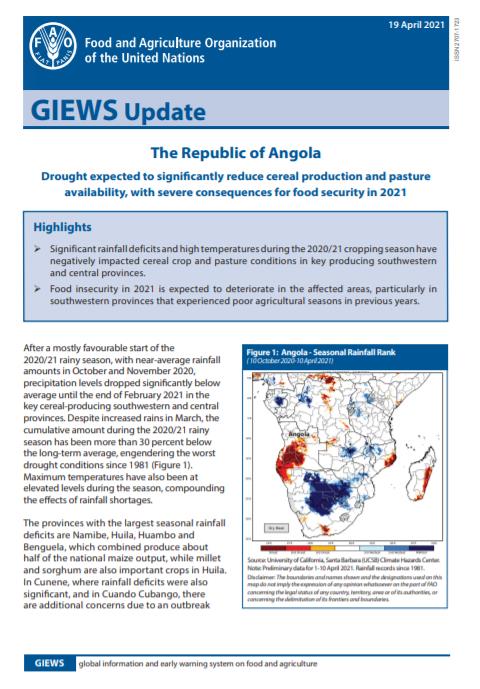
GIEWS Update - The Republic of Angola, 19 April 2021
19/04/2021
Significant rainfall deficits and high temperatures during the 2020/21 cropping season have negatively impacted cereal crop and pasture conditions in key producing southwestern and central provinces. Food insecurity in 2021 is expected to deteriorate in the affected areas, particularly in southwestern provinces that experienced poor agricultural seasons in previous years.
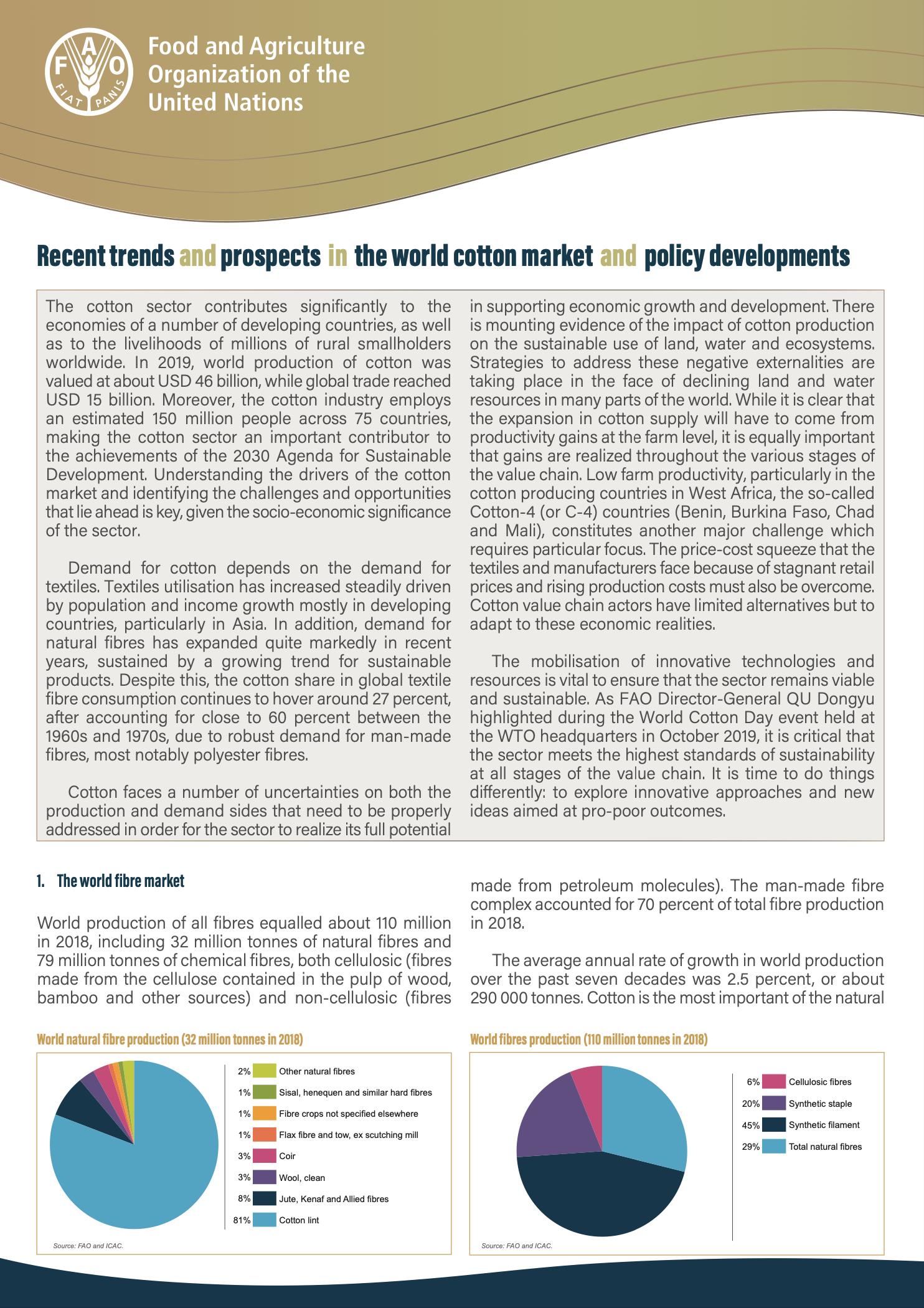
Recent trends and prospects in the world cotton market and policy developments - Executive Summary
14/04/2021
The cotton sector contributes significantly to the economies of a number of developing countries, as well as to the livelihoods of millions of rural smallholders worldwide. The cotton industry employs an estimated 150 million people across 75 countries, making the cotton sector an important contributor to the achievements of the 2030 Agenda for Sustainable Development. Understanding the drivers of the cotton market and identifying the challenges and opportunities that lie ahead is key, given the socio-economic significance of the sector.
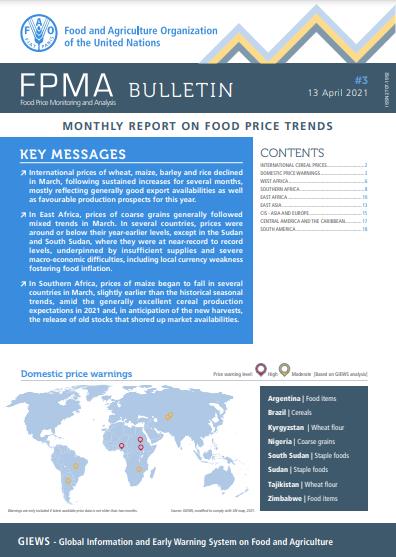
Food Price Monitoring and Analysis (FPMA) Bulletin #3, 13 April 2021
13/04/2021
International prices of wheat, maize, barley and rice declined in March, following sustained increases for several months, mostly reflecting generally good export availabilities as well as favourable production prospects for this year. In East Africa, prices of coarse grains generally followed mixed trends in March. In several countries, prices were around or below their year-earlier levels, except in the Sudan and South Sudan, where they were at near-record to record levels, underpinned by insufficient supplies and severe macro‑economic difficulties, including local currency weakness fostering food inflation. In Southern Africa, prices of maize began to fall in several countries in March, slightly earlier than the historical seasonal trends, amid the generally excellent cereal production expectations in 2021 and, in anticipation of the new harvests, the release of old stocks that shored up market availabilities.
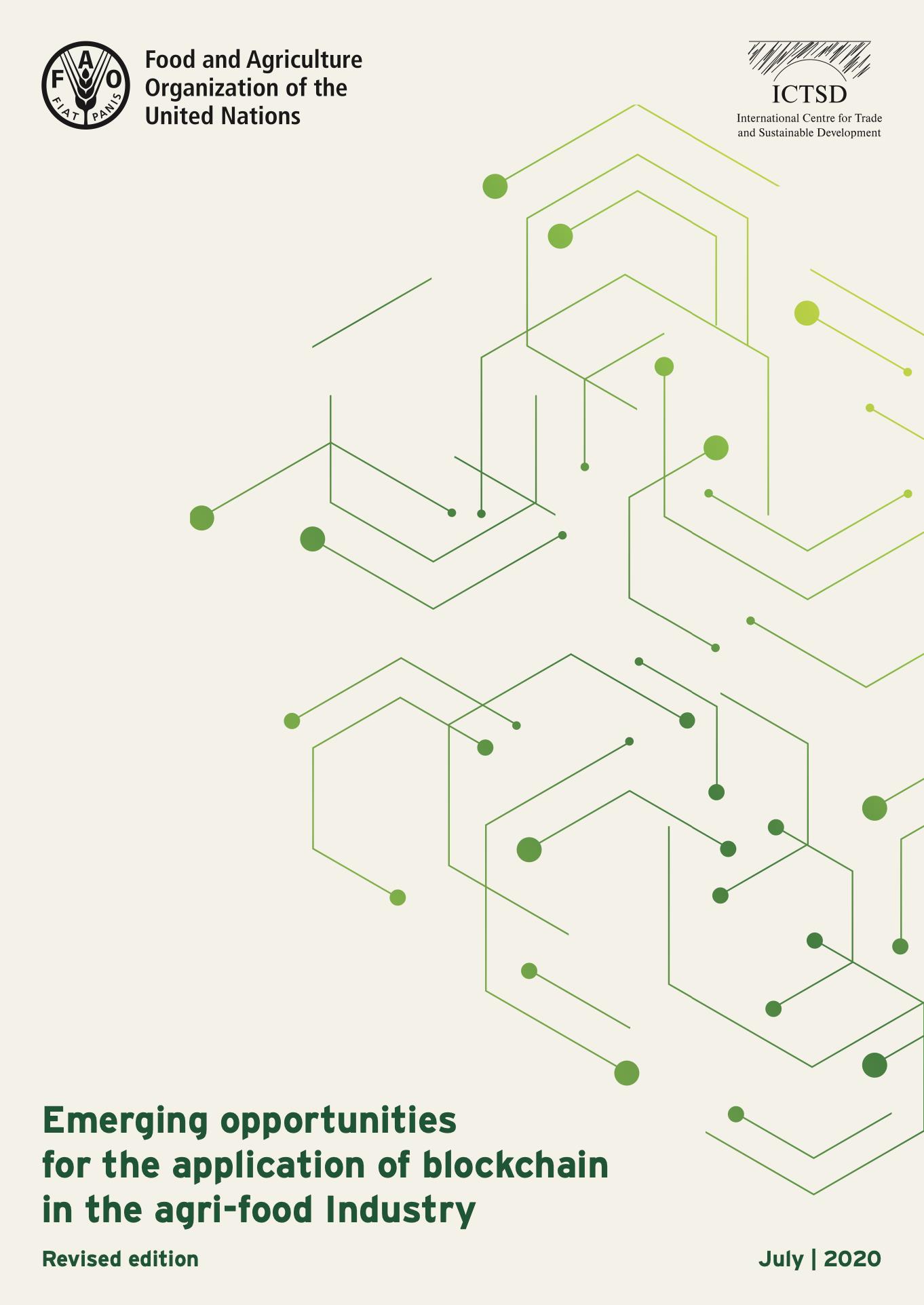
Emerging opportunities for the application of blockchain in the agri-food industry
07/04/2021
Distributed ledger technologies (DLTs) and smart contracts provide a unique opportunity to bring greater efficiency, transparency and traceability to the exchange of value and information in the agriculture sector. By utilising digital records, cryptography and the disintermediation of transaction processing and data storage, DLTs can improve both agricultural supply chains and rural development interventions in a number of ways. The technology has the potential to simplify and integrate agricultural supply chains, enhance food safety, facilitate access to trade finance and other types of agricultural financial services, improve market transparency, provide greater legal certainty to land-tenure systems and strengthen accountability for compliance with international agreements related to agriculture. This paper aims to facilitate a better understanding of the opportunities, benefits and applications of DLTs in agri-foods. It explores the potential of DLTs to address many of the challenges that disadvantaged market players face by participating in integrated supply chains. It also identifies the technical limits, possible institutional barriers to their adoption and the way forward for the public sector. Overall, it shows how DLTs can be an impetus to achieve the Sustainable Development Goals (SDGs)
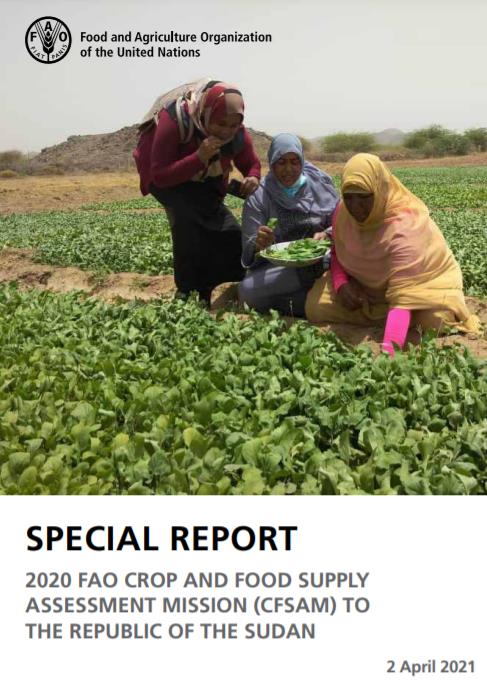
Special Report – 2020 FAO Crop and Food Supply Assessment Mission (CFSAM) to the Republic of the Sudan
02/04/2021
With the support of the Food and Agriculture Organization of the United Nations (FAO) and other partners, including the World Food Programme (WFP), the Famine Early Warning Systems Network (FEWS NET) and USAID, between 17 December 2020 and 3 January 2021, the Ministry of Agriculture and Natural Resources (MoANR) carried out its annual assessment Mission to determine crop production and food supply situation throughout the 18 states of the country. Due to the COVID-19 pandemic and the restrictive measures introduced to contain it, the methodology was modified, with institutions of the Federal Government, normally conducting the survey, delegating to staff at State level the task of collecting all the requested data, under the supervision of federal staff from the Food Security Technical Secretariat (FSTS) and the General Directorate of Planning and Agricultural Economics (GDPAE).
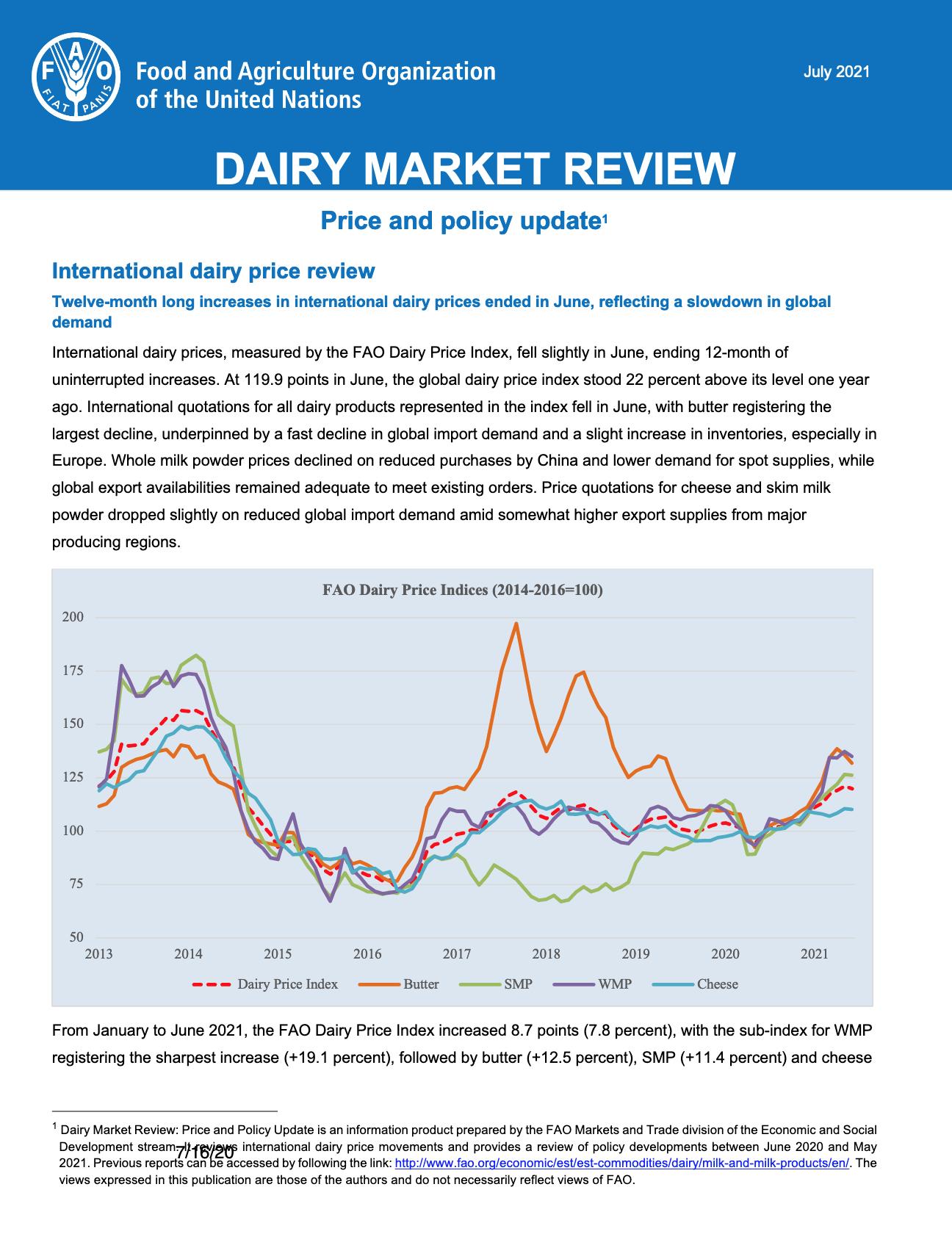
Dairy Market Review - Overview of global dairy market developments in 2020 - April 2021
01/04/2021
Dairy Market Review: Overview of global dairy market developments in 2020, April 2021 The Dairy Market Review, April 2021 issue presents an overview of global dairy market developments in 2020, including trends in international milk product prices, world milk production and international trade in milk products. International dairy prices declined in 2020, mainly reflecting reduced import demand due to widespread economic downturns in importing countries. High export availabilities in exporting countries, caused by reduced internal sales and increased processing of less labour-intensive milk products, especially milk powders, also weighed on global milk prices. Despite many challenges to production due to the COVID-19 health crisis, world milk output rose in 2020, driven by increases in nearly all major regions. International trade in milk products also increased, driven by increased imports by a few countries in Asia and the Middle East.
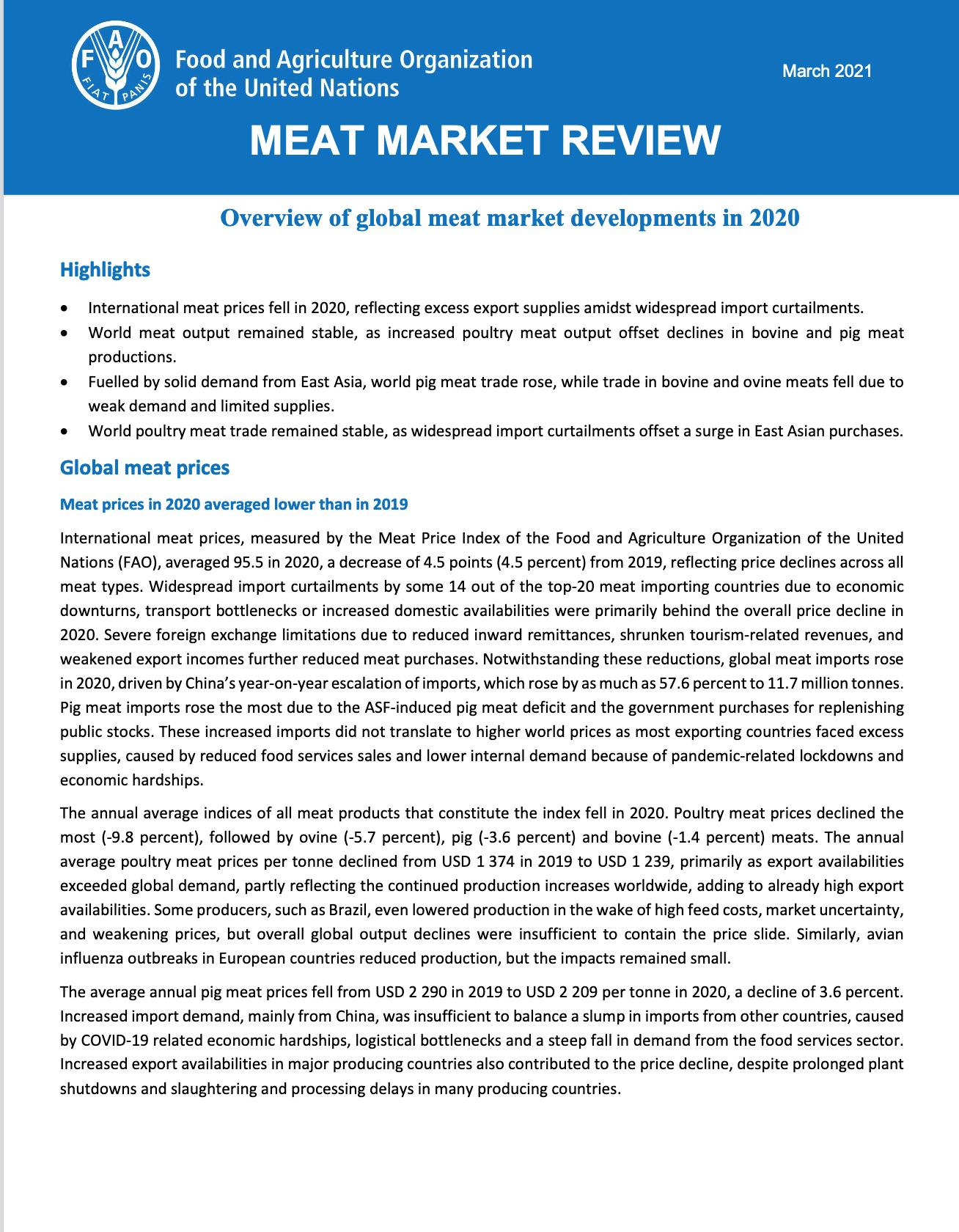
Meat Market Review: Overview of global meat market developments, March 2021
18/03/2021
The Meat Market Review, March 2021 issue presents an overview of global meat market developments in 2020, including trends in international meat prices, global meat production and trade in meat and meat products. International meat prices fell in 2020, reflecting price declines across all meat types, underpinned by widespread import curtailments by many meat importing countries due to pandemic-related economic downturns, transport bottlenecks and foreign reserve limitations. Increased export availabilities in exporting countries owing to reduced food services sales and lower internal demand also depressed international meat prices. Regarding meat production, world meat output remained stable, despite pandemic related issues and impacts of African swine fever. The total world meat trade increased, albeit slowly. Fuelled by strong demand from East Asia, world trade in pig meat rose, but weak demand and limited supplies resulted in lower bovine and ovine meat trade. Despite market disruptions, world trade in poultry meat remained stable.
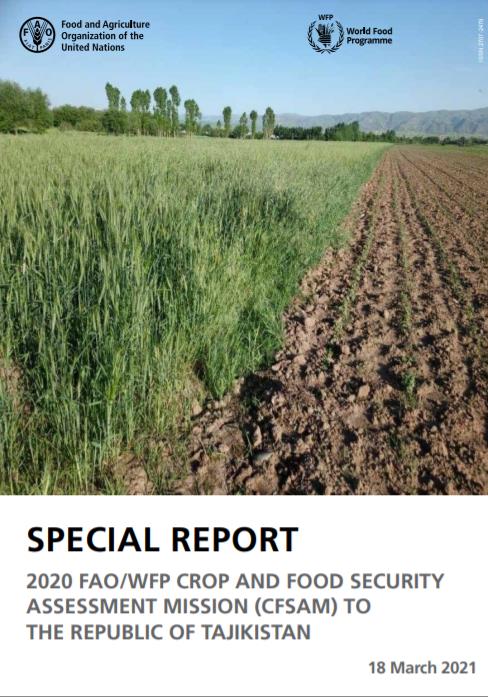
Special Report – 2020 FAO/WFP Crop and Food Security Assessment Mission (CFSAM) to the Republic of Tajikistan
18/03/2021
In response to the request by the Government of the Republic of Tajikistan on 15 May 2020, FAO and WFP carried out an abridged approach to the Crop and Food Security Assessment Mission (CFSAM) for the country. After thorough planning and preparation, considering movement restrictions due to the COVID-19 pandemic, the Mission estimated the 2020 production of the major food crops and the import requirements for the 2020/21 marketing year and assessed the overall food security situation in the country. After reviewing and collecting existing information in the capital, Dushanbe, the Mission was in the field between 6 and 31 July 2020 and between 15 and 25 September 2020 to estimate the production of first and second season crops and to assess households’ food security.
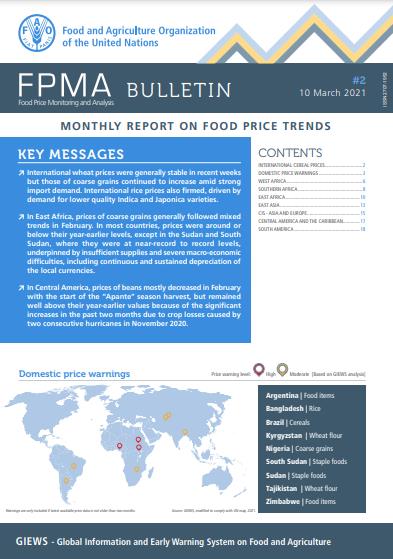
Food Price Monitoring and Analysis (FPMA) Bulletin #2, 10 March 2021
10/03/2021
International wheat prices were generally stable in recent weeks but those of coarse grains continued to increase amid strong import demand. International rice prices also firmed, driven by demand for lower quality Indica and Japonica varieties. In East Africa, prices of coarse grains generally followed mixed trends in February. In most countries, prices were around or below their year-earlier levels, except in the Sudan and South Sudan, where they were at near-record to record levels, underpinned by insufficient supplies and severe macro‑economic difficulties, including continuous and sustained depreciation of the local currencies. In Central America, prices of beans mostly decreased in February with the start of the “Apante” season harvest, but remained well above their year-earlier values because of the significant increases in the past two months due to crop losses caused by two consecutive hurricanes in November 2020.



